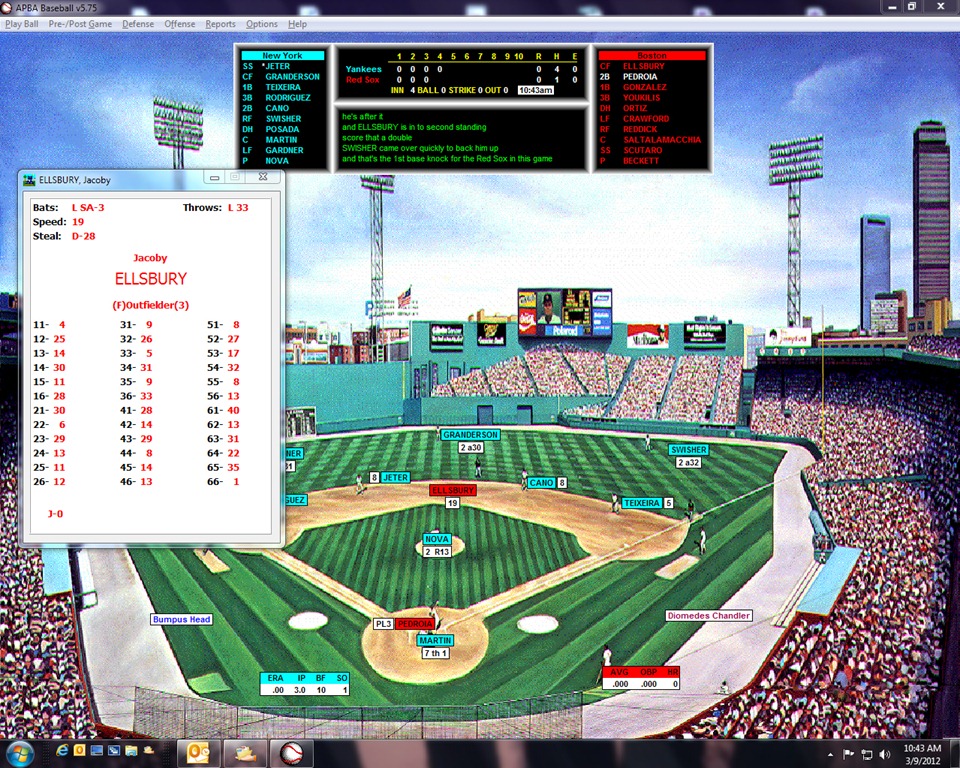
R is a pitcher rating that removes strikeouts for low strikeout pitchers.

Strikeout Letter K/(BF-IBB) compared to league averageĬontrol Letter BB/(BF-IBB) compared to league average Plate appearances against a plain control pitcher, about 40 times against a Z,Īn APBA C is generally going to yield about a hit per inning. Walks 60 times in 600 plate appearances, he should walk about 60 times in 600 Z pitchers will steal about a third of the 14’s they see while W pitchers surrender walks about 1.3 times as often as a plain pitcher. A pitcher with a plain control rating can be assumed to give up walks at the league average rate. Many APBA seasons include IBB in the totals SKS seasons do not. On Walks: 14’s are generally assigned to hitters’ cards on a 1:1 ratio, meaning the walks a hitter gets are represented by the 14’s on his card. Was a bit more sophisticated, as it included the schedule of possible opponentsĪlgorithm was later included in Joe Sweeney’s grader which combines the twoĬMBA grades into one - which wasn’t really an improvement to me since we couldĪlready accomplish everything CMBA tried to do by aggressively assigning the Same time, Miller Associates introduced a similar system into the Wizard for Nobody’s ever demonstrated to me that the CMBA grades performed anyįor utilizing H/IP to grade the batters was introduced for BBW by the Skeetersoftįor BBW but was based on the hitting charts of the (1976) MG, around which the The 30 grades of the MG were elevated to the primary status and theĪround 2001 or so the BG grades were further adjusted to account for the Up to it since the late ’80s) to include several ground-breaking ways to lookĪt the application of the grading structure. System was officially revised (they didn’t announce it, but had been building Of course, neither are the APBA hitting cards Hitting cards are not in synch with the CMBA grades. So different from APBA, it just starts with Runner on First instead of BasesĪll right, but nobody ever demonstrated its overall accuracy as being anyīetter than the next generation of APBA grades. Pitchers more realistic and then capture the ERA by regulating how many of CMBA wants to allow more hits and make the Player’s value to the team, not specific stats down to the nth degree.ĭerogative – just couldn’t ever come up with a more descriptive name. Give way to Wins and were docked for innings, but the design was to represent a Grades, which take a lot of heat but are quite good at doing what they were

Pastime-APBA game, of which the Skeetersoft boards are certainly a derivative. Generations (or four and one major sub-category) of grades for the National


 0 kommentar(er)
0 kommentar(er)
